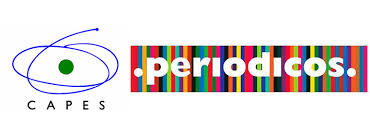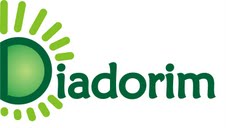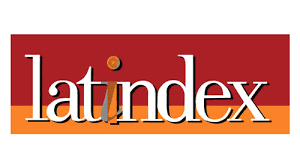ATTITUDE CONTROL SYSTEM DESIGN FOR A RIGID-FLEXIBLE SATELLITE USING THE H-INFINITY METHOD WITH PARAMETRIC UNCERTAINTY
DOI:
https://doi.org/10.26512/ripe.v2i19.15022Abstract
This paper presents the Attitude Control System (ACS) design for a rigid-flexible satellite with two vibrations mode, using the H infinity method considering the parametric uncertainty over the mass matrix. Usually the mathematic model obtained from the linearization and/or reduction of the rigid flexible model loses information about the flexible dynamical behavior and introduces some uncertainty. As a result, the ACS performance can be degraded when controlling large angle maneuvers. One way to recovery the dynamics
information is to include in the ACS design the parametric and not parametric uncertainties of the system. The rigid flexible satellite dynamics can be represented by an ordinary differential equation (EDO), which coefficients are the matrices mass, damping and rigidly. In this paper one investigates the influence of the uncertainty in the mass matrix in the control law performance designed by the H infinity control methodology. The results of the simulations have shown that the control law designed using the H-infinity control method
considering the parametric uncertainty is robust since the ACS performance has been improved in controlling the rigid flexible satellite attitude and suppressing vibrations.
Keywords: ACS, Satellite rigid-flexible, Uncertain, H infinity
Downloads
References
Bigot, P. G.; Souza, L. C. G. Design of non-linear controller for a flexible rotatory beam using state-dependent riccati equation (sdre) control. Proceedings of the 2013 International Conference on Systems, Control and Informatics, p. 288 ”“ 295, 2013.
Gasbarri P., R. Monti, C. De Angelis, M. Sabatini, Effects of uncertainties and flexible dynamic contributions on the control of a spacecraft full-coupled model, Acta Astronautica, Volume 94, Issue 1, January”“February 2014, Pages 515-526, ISSN 0094-5765, http://dx.doi.org/10.1016/j.actaastro.2012.08.018.
Gu D.W., P. P. G.; M.M., K. Robust control design: with matlab. London, UK: Springer, 2005
Junkins, J. L, Kim, Y. "Introduction to dynamics and control of flexible structures". Washington, DC: American Institute of Aeronautics and Astronautics (AIAA), 1993.
Mainenti, L ; Souza, L.C. G ; De Souza, F. L. A comparative study between control strategies for a solar sailcraft in an Earth-Mars transfer. Mechanical Systems and Signal Processing, v. 1, p. 10, 2016.
Pinheiro, E.R., Souza L.C.G, Design of the Microsatellite Attitude Control System Using the Mixed H2/H∞ Method via LMI Optimization, Mathematical Problems in Engineering, vol. 2013, Article ID 257193, 8 pages, 2013. doi:10.1155/2013/25719.
Sidi, M. J. Spacecraft dynamics and control: A pratical engineering approach. NewYork, NY: Cambridge University Press, 1997.
Skogestad, S, Postlethwaite, I. Multivariable feedback control: analysis and design. Chichester, UK: John Wiley and Sons, 2001.
Souza, A.G, Souza, L. C. G, H infinity controller design to a rigid-flexible satellite with two vibration modes, Journal of Physics: Conference Series, vol. 641, pp. 012030, 2015.
Souza, L.C.G, Souza, A.G. Satellite Attitude Control System Design considering the Fuel Slosh Dynamics, Shock and Vibration, vol. 2014, 8, pages, 2014. doi:10.1155/2014/260206
Souza, L G C; Bigot, P. An adaptive method with weight matrix as a function of the state to design the rotatory flexible system control law. Mechanical Systems and Signal Processing, v. 1, p. 1, 2016.
Souza, L. C. G. Design of Satellite Control System Using Optimal Nonlinear Theory. Mechanics based design of structures and machines, 34(4), 351-364.2006
Zhou, K, Doyle, J. C, Essentials of robust control. Upper Saddle River, NJ:Prentice-Hall, 1998.
Downloads
Published
How to Cite
Issue
Section
License
Given the public access policy of the journal, the use of the published texts is free, with the obligation of recognizing the original authorship and the first publication in this journal. The authors of the published contributions are entirely and exclusively responsible for their contents.
1. The authors authorize the publication of the article in this journal.
2. The authors guarantee that the contribution is original, and take full responsibility for its content in case of impugnation by third parties.
3. The authors guarantee that the contribution is not under evaluation in another journal.
4. The authors keep the copyright and convey to the journal the right of first publication, the work being licensed under a Creative Commons Attribution License-BY.
5. The authors are allowed and stimulated to publicize and distribute their work on-line after the publication in the journal.
6. The authors of the approved works authorize the journal to distribute their content, after publication, for reproduction in content indexes, virtual libraries and similars.
7. The editors reserve the right to make adjustments to the text and to adequate the article to the editorial rules of the journal.









